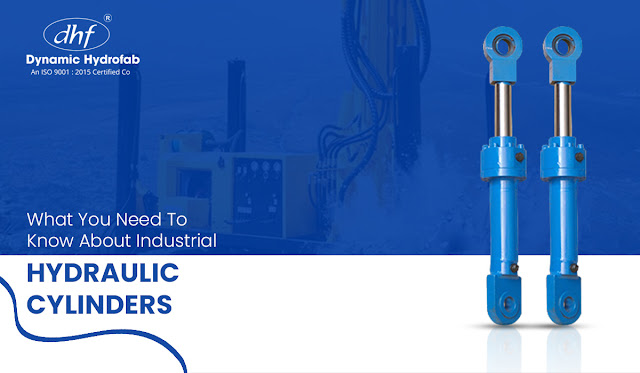What You Need to Know About Industrial Hydraulic Cylinders
Manufacturing, building, civil engineering, and aviation are just a few industries that rely heavily on hydraulic cylinders. The many uses of these cylinders produce mechanical force in a straight line. The usual use is pressing, pulling, pushing, or lifting objects that necessitate extraordinary force. The Industrial Hydraulic Cylinders India are essential to any lifting equipment, such as a forklift or a hydraulic jack. In this article, we will talk about everything about hydraulic cylinders.
What Is the Function of a Hydraulic Cylinder?
According to Pascal's Principle of Fluid Mechanics, hydraulic cylinders work. Any change in the hydraulic fluid pressure causes an equal distribution of energy in all directions within the fluid chamber, as Blaise Pascal found in the 17th century. When one piston in a container is subjected to X pressure, the second piston in the same container will be affected by an equal and opposite amount of pressure.
Plus, Pascal found that the formula for pressure in a fluid chamber is the force applied/chamber area. The basis of all the industrial machinery on a global scale is this formula: P=F/A. You must consider two pistons operating in a fluid chamber with one cylinder under pressure. The second cylinder will experience a fivefold increase in force if its area is five times larger than the first.
The Benefits of Hydraulic Cylinders
The Industrial Hydraulic Cylinders India of the same dimensions can generate a mechanical force that is twenty-five times stronger than that of a pneumatic cylinder of the same dimensions. A top-tier hydraulic pump can generate pressures of up to 4000 psi, in contrast to the 250-psi maximum output of pneumatic cylinders. Hydraulic cylinders do not require the addition of more fluid to sustain a constant force and torque because hydraulic fluid is incompressible. The hydraulic pump and motor can continue to work effectively and with little power loss, regardless of how far away they are from the operation.
Picking Out the Right Hydraulic Cylinder
Once you've identified the use case for an Industrial Hydraulic Cylinder, there are several considerations to make before settling on the best cylinder. Efficient hydraulic operations rely on careful planning and design, which entails the following main steps:
Mass Calculation:
The load's mass affects a hydraulic lift's cylinder size and lifespan.
Calculating the bore size:
The larger barrels can accommodate applications that require significant force and torque.
Making a rod size selection:
Consider the bearing load, rod buckling strength, and cylinder stroke length to find the right rod size. One option is to make specialized cylinders if the bore size makes regular cylinders unsuitable.
Considering the varieties of cushions:
You can use cushioning at either end of the Industrial Hydraulic Cylinder to reduce impact if the hydraulic application calls for fast rod movement.
To what end are hydraulic linear cylinders employed?
There are innumerable uses for industrial hydraulic cylinders all over the world. Regarding efficiency, power, and longevity, hydraulic cylinders are head and shoulders above the competition. No excavator, bulldozer, dump truck, grader, or loader in the mobile equipment sector is complete without hydraulics.
Various heavy machinery, including forging presses, injection molders, compactors, and more, depend on hydraulic cylinders for operation in manufacturing plants.
Conclusion
Even though industrial
hydraulic cylinders are strong when in operation, choosing the right
one for the job requires careful consideration of all relevant factors. When
choosing or designing a hydraulic cylinder, knowing how each part works is
crucial. You will get the best cylinders from Dynamic Hydrofab.











Post a Comment